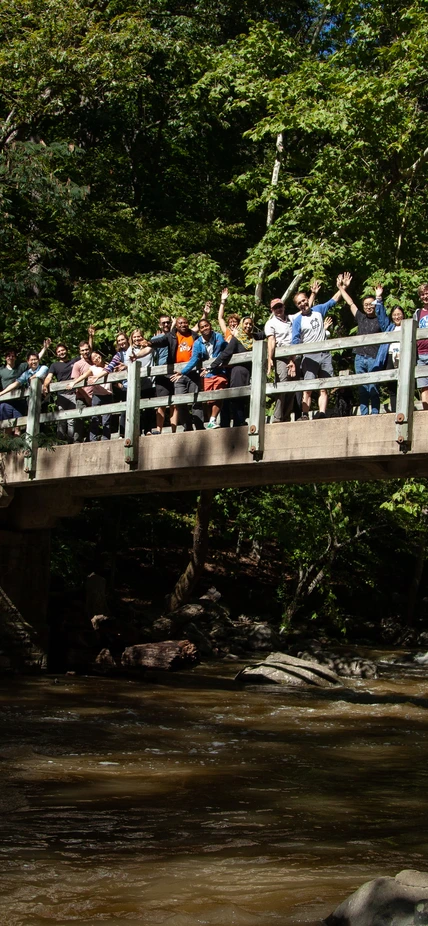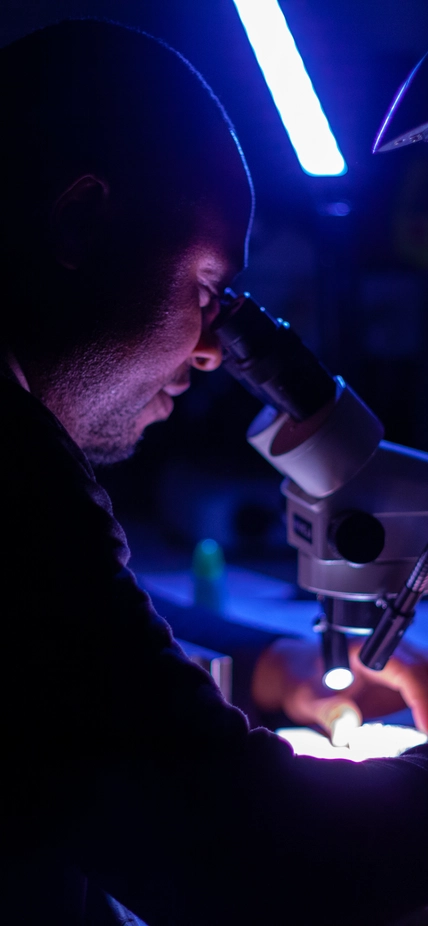Planning to apply for a postdoctoral fellowship this year? We’ve gathered insights straight from the experts at the Carnegie Science Earth and Planets Laboratory (EPL) to help you put your best foot forward. This Q&A will provide you with an in-depth guide on how to create a compelling postdoc application that stands out in the crowd!
Top Tips (TL;DR)
- Contact a possible mentor at EPL to discuss your proposal idea.
- Describe how the research is compelling in the context of broad and important science questions.
- Explain why EPL is the best place to conduct this research.
Section 1: Evaluation Criteria
Understanding the evaluation criteria is essential to building a successful application. The multidisciplinary committee solicits input from EPL staff members who are experts in your scientific field based on four key categories:
- Proposed Research (40%): Craft a science plan that both clearly describes a compelling set of investigations and also outlines a technically feasible path forward. Your proposal should demonstrate the potential for new techniques or novel applications that expand upon your prior research.
- Preparation and Past Research (25%): Showcase your grasp of significant scientific questions, your impact on the field, and your ability to develop new skills. Highlight your ability to publish work and your preparedness to undertake the proposed research.
- Fit with EPL (25%): Convey how your research dovetails with the interests of EPL staff members and will use EPL resources. Additionally, exhibit your enthusiasm for contributing to EPL's positive research environment.
-
Independence (10%): Demonstrate your capacity to conceive and execute independent research projects, collaborate effectively, and lead programs
We invite 15-20 applicants to interview via Zoom based on their application evaluation. The interviews happen in January.
Section 2: Writing About Your Proposed Research
- Start strong by setting the stage with a captivating introduction that sets up the rest of the proposal.
- Explain the broader science questions your research addresses.
- Keep in mind that your proposal will be reviewed by a multidisciplinary group of scientists, so avoid excessive jargon.
- Make clear the significance of your research in a broad scientific context, giving a bigger picture than your subfield and perhaps connecting to other fields.
- Explain what is new or innovative in both your past and future research. This can also generate enthusiasm from committee members who work in vastly different areas.
- Explain why your research project is timely and important to do now.
- Explain what key knowledge gap your research will help fill, how it will influence future work, and what you expect its lasting impact to be.
- Convey enough specifics about how you will address the science questions to convince the experts that your project is feasible at EPL during the duration of the fellowship.
- Avoid writing a proposal that is only a list of tasks you will try to accomplish (i.e., I will do these experiments, or I will collect these data) without saying why.
- Your statement of previous research is a good place to explain what skills you already have.
-
A timeline is not required, but it can help the reader (and you!) connect the different parts of the project together.
- A Gantt chart at the end is always helpful and lets readers know you have thought about timelines.
- Yes! Consider the risks in your proposal and discuss backup plans (e.g., a risk assessment plan) if something does not go as planned or you cannot get the access you need to collect important data (synchrotron beamtime, telescope time, etc.).
- We encourage novel and risky proposals, but we also expect realistic appraisal and mitigation strategies.
- Do not expect the committee to overlook risks that you do not mention.
Section 3: Writing about Your Past Research
We want to see that you understand the broad science questions addressed by your work, that you made original contributions to scientific knowledge, and that you developed the skills to attack new projects.
This is also where you can demonstrate independence. Describe what you have uniquely contributed to projects, especially in relation to your previous advisor(s) or colleagues. For example, you could explain your role in a multi-author paper where you are not the first author.
Hopefully, your proposed work is more than just a simple extension of your prior work. You should explain how each element of your previous work addressed broad—possibly different—science questions and contributed to scientific knowledge.
Try not to repeat text so you can use your space to convey new and interesting information.
Section 4: Demonstrating Fit
- Research EPL, identify potential mentors from our staff, and discuss your proposal idea with those staff scientists.
- Make sure your research can be done at EPL and that potential mentors are interested in and will be supportive of the work.
- Approaching the process in this way allows you to meet several potential mentors, even if the fellowship does not end up working out in the current cycle.
Please note that while most mentors are happy to help bounce around or refine ideas (when given enough time), your research idea must be your own. EPL staff will not provide you with project ideas or project ideas or help write your proposal.
- Make sure to mention the names of staff members at EPL who you might work with and how you know your proposal is a good fit.
- Convey why you are applying to EPL.
- Explain why EPL is a good place to enhance your scientific development and help launch your career.
Last year, 28% of proposals did not mention a single EPL staff member, and none of those applicants was invited to interview.
Section 5: Other General Questions
Yes! It is not just ok; we positively recommend it.
Share your application materials with your letter writers and get their feedback. Ask a friend, colleague, or family member to read it for typos and grammar. Ask colleagues, including non-experts in your field, to read your statements for scientific clarity; make sure they get the main ideas and can then articulate back why your research is interesting and important.
- Choose references who know you well enough to explain how you are ready for independent research, can explain what skills you have mastered, and can provide corroboration that your research plan is your own idea and is exciting.
- Ideally, references give the committee new information and don’t rehash what you’ve already said in your statements; if it takes a reference letter to explain your work, you need to go back and improve your previous and future research statements.
- Feel free to ask different letter writers to comment on different parts of your preparation, and if there are specific things you want to be mentioned, ask your references to do so.
- You can tell your references that we particularly want to read about your level of independence, scientific vision, and how you are prepared to carry out your proposed research.
- Alert your letter writers well in advance about the fellowship deadline.
In general, no. However, we are well-intentioned people who want to mentor talented scientists, and we know that mistakes get made. If you need something, you might as well ask for it.
- In general, no. We typically get 150 proposals, so try to help us remember the key features of yours.
- Consider using headings like “background," “goals," “methods,” and “impact” to help organize the proposal and make it easier for reviewers to read.
- You can utilize boldface type, color, or italics for important sentences to help a reader quickly get the important ideas in your application.
- Figures are not required but can be an efficient way to convey information and save on words.
- Any figures should add key information to your proposal.
- A figure diagramming a technique or research idea should help the reader understand your proposal (figures do not have to be from a scientific paper).
- You may need to make figures specifically for your proposal.
- Be sure not to include figures “just to include a figure.” Some proposals are fine without figures – it depends on your research field and your proposed work.
In general, papers listed as “in prep” are not considered “real.” Papers that are submitted are considered “real.” Be clear in your publication list which papers are already through peer review (accepted, in press, published) and which are not yet through peer review (submitted). If you have an “in-prep” article that is essentially complete, you can add “manuscript available upon request” to let reviewers know that it is that far along. It is fine to discuss “in-prep” articles in your statement of previous research so the committee understands your current trajectory.
This is subjective, but some readers prefer references with names (e.g. Weinberger et al. 2021) instead of numbers (e.g. [1]) because it avoids having to constantly flip to the end of the proposal to look up what reference corresponds to what number. Especially if the papers are yours, you can benefit from using your name. In the reference list, you can use whatever style you want, and paper titles can be helpful, particularly when they’re titles of your papers.
This FAQ is based on advice from our Staff Scientists. Please do not hesitate to reach out to EPL's Postdoc Selection Committee Chair, Associate Director Alycia Weinberger, or EPL Director, Michael Walter, with any further questions.
Good luck!

